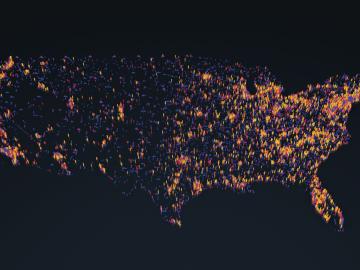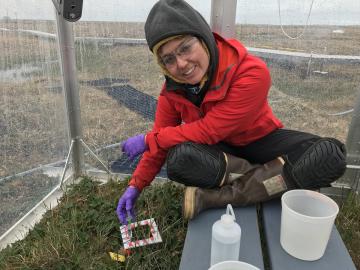
Filter News
Area of Research
- Advanced Manufacturing (2)
- Biology and Environment (5)
- Computer Science (1)
- Energy Science (19)
- Fusion and Fission (2)
- Fusion Energy (2)
- Isotopes (1)
- Materials (11)
- Materials for Computing (1)
- National Security (6)
- Neutron Science (4)
- Nuclear Science and Technology (8)
- Nuclear Systems Modeling, Simulation and Validation (1)
- Supercomputing (11)
News Type
News Topics
- (-) Artificial Intelligence (4)
- (-) Big Data (3)
- (-) Cybersecurity (1)
- (-) Environment (18)
- (-) Grid (5)
- (-) Machine Learning (6)
- (-) Microscopy (6)
- (-) National Security (2)
- (-) Nuclear Energy (16)
- (-) Security (2)
- 3-D Printing/Advanced Manufacturing (17)
- Advanced Reactors (9)
- Bioenergy (7)
- Biology (4)
- Biomedical (14)
- Biotechnology (1)
- Buildings (1)
- Chemical Sciences (5)
- Composites (1)
- Computer Science (21)
- Coronavirus (16)
- Critical Materials (2)
- Energy Storage (16)
- Exascale Computing (1)
- Frontier (1)
- Fusion (6)
- High-Performance Computing (2)
- Isotopes (6)
- Materials (2)
- Materials Science (26)
- Mathematics (1)
- Molten Salt (2)
- Nanotechnology (14)
- Neutron Science (21)
- Physics (12)
- Polymers (6)
- Quantum Science (6)
- Space Exploration (1)
- Summit (12)
- Transportation (9)
Media Contacts

OAK RIDGE, Tenn., May 5, 2020 — By 2050, the United States will likely be exposed to a larger number of extreme climate events, including more frequent heat waves, longer droughts and more intense floods, which can lead to greater risks for human health, ecosystem stability and regional economies.

While some of her earth system modeling colleagues at ORNL face challenges such as processor allocation or debugging code, Verity Salmon prepares for mosquito swarms and the possibility of grizzly bears.

As a teenager, Kat Royston had a lot of questions. Then an advanced-placement class in physics convinced her all the answers were out there.

Scientists at Oak Ridge National Laboratory used a focused beam of electrons to stitch platinum-silicon molecules into graphene, marking the first deliberate insertion of artificial molecules into a graphene host matrix.

Oak Ridge National Laboratory researchers working on neutron imaging capabilities for nuclear materials have developed a process for seeing the inside of uranium particles – without cutting them open.

OAK RIDGE, Tenn., Feb. 19, 2020 — The U.S. Department of Energy’s Oak Ridge National Laboratory and the Tennessee Valley Authority have signed a memorandum of understanding to evaluate a new generation of flexible, cost-effective advanced nuclear reactors.
A team of scientists led by Oak Ridge National Laboratory found that while all regions of the country can expect an earlier start to the growing season as temperatures rise, the trend is likely to become more variable year-over-year in hotter regions.

Researchers at ORNL demonstrated that sodium-ion batteries can serve as a low-cost, high performance substitute for rechargeable lithium-ion batteries commonly used in robotics, power tools, and grid-scale energy storage.

A novel approach developed by scientists at ORNL can scan massive datasets of large-scale satellite images to more accurately map infrastructure – such as buildings and roads – in hours versus days.

Liam Collins was drawn to study physics to understand “hidden things” and honed his expertise in microscopy so that he could bring them to light.


